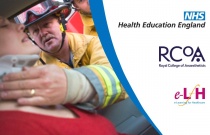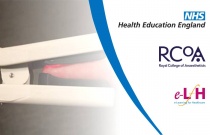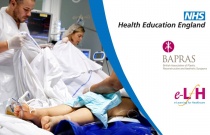Gram-positive Cocci
Andy Taylor
0.50 Hours
This session describes the range of Gram-positive cocci relevant to healthcare with a particular focus on the clinical conditions caused by Gram-positive cocci infections that are found frequently in patients on intensive care.
Gram-negative Bacilli
Jamie Strachan
0.50 Hours
This session describes the range of gram-negative bacilli relevant to healthcare with a particular focus on the clinical conditions caused by gram-negative bacilli found frequently in patients on the Intensive Care Unit.
HIV Diagnosing
Erasmus Smit
0.50 Hours
This session explains how HIV should be diagnosed, what samples should be taken, and how they should be stored and transported. It explains what diagnostic tests are available, how to interpret them, their sensitivity and specificity, and their potential advantages or disadvantages. The timescale between HIV exposure and tests b....
Natural History of HIV Infection
Katherine Coyne
0.50 Hours
This session will discuss the natural history of HIV infection including primary infection, clinically asymptomatic and symptomatic stages. It will describe the relationship between CD4 count and risk of opportunistic infections, clinical syndromes and malignancies.
HIV AIDS in the Thorax
John Holemans
0.50 Hours
This session will outline thoracic complications of human immunodeficiency virus/acquired immunodeficiency syndrome (HIV/AIDS) in adults and illustrate the radiological features in a series of HIV/AIDS-related cases.
Gall Bladder Disease
Lisa Carter and Janet Skinner
This session deals with the assessment and management of gall bladder and gall stone disease.
Management of Spinal Injuries
Jun Jack Wong and Henry Wang
0.50 Hours
This session describes the mechanisms, management and complications of spinal injuries.
Image Interpretation - Plain X-rays of the Adult Chest: The Normal Chest Radiograph
Nick Woznitza
This session will look at the normal appearances of a chest radiograph. It will cover the radiological anatomy, use of a search strategy, common radiographic abnormalities and normal variants.
Mediastinum and Contents
Adrian Pearce
0.50 Hours
This session describes the contents, relations and anatomical divisions of the mediastinum.
Intermittent Auscultation
Christine Harding and Debbie Johnson
0.50 Hours
This session introduces intermittent auscultation and explains the appropriate use of this skill in the intrapartum period and how to perform 'intelligent intermittent auscultation'. The session goes on to describe when intermittent auscultation would be used and how enhanced understanding of fetal and maternal physiology in lab....
Gaseous Exchange: Oxygen
Fiona Gamlin
0.50 Hours
This session describes how oxygen is transported in the blood to the tissues and vital organs.
Gaseous Exchange: Hypoxia and Hyper- and Hypo-Capnia
Fiona Gamlin
0.50 Hours
This session is exploration of the causes and physiological consequences of hypoxia, hypocapnia and hypercapnia.
Function of Haemoglobin in Oxygen Carriage
Caroline Thomas and Andy Lumb
0.50 Hours
This session focusses on the function of haemoglobin in oxygen (O2) carriage from the lungs to other tissues where cells are supplied with the O2 required for oxidative phosphorylation in the mitochondria. We will cover the structure of normal haemoglobin, its abnormal forms and their significance.
Hormonal, Metabolic and Inflammatory Responses to Surgery
Grainne Nicholson
0.50 Hours
This session covers the hormonal, metabolic and inflammatory responses to surgery.
Functions of the Placenta
Mary Mushambi
0.50 Hours
This session will explore the functions of the placenta and will provide the necessary understanding for a doctor starting in obstetric anaesthesia.
Ionization
Sue Hill
0.50 Hours
This session covers the properties of molecules that act as weak acids and weak bases. The Henderson-Hasselbalch equation will be derived and discussed in terms of the pharmacokinetic properties of anaesthetic drugs.
Indications for Postoperative Admission
Katy Shuker and Andy Temple
0.50 Hours
This session explores the rationale for critical care admission in the postoperative patient, how to identify patients likely to benefit from critical care and the benefits of admission.
Non-Accidental Burns in Children and Vulnerable Adults
Julia Sarginson and Sarah Pape
0.50 Hours
This session will describe the features that are commonly associated with non-accidental burns and describe the action that should be taken if a non-accidental injury (NAI) is suspected.
Initial Management of Electrical Burns
Debbie Hunt, Shomari Dotun Lee Zack-Williams and Nadeem Khwaja
0.50 Hours
This session will describe the role of fasciotomy in major electrical burns and list the indications for amputation. Later sections will explore how to avoid and treat renal complications following an electrical burn.
Feeding the Malnourished Burn Patient
Samuel Coulson and Alison Woodley
0.50 Hours
This session will explain why some burn patients are malnourished before injury and describe the effects of malnutrition on the metabolic response to a burn. Later, it will explore the precautions that are necessary when feeding a malnourished burn patient.
Management of Inhalation Injury
Karl Walsh and Baljit Dheansa
0.50 Hours
This session will describe the clinical features of inhalation injury and explain how to assess the severity of inhalation injury. Later sections will offer guidance on the initial management of patients with inhalation injury.
Lower Limb: Foot
Karen Daly
0.50 Hours
This session acquaints the learner with the bony and ligamentous anatomy of the foot and describes the maintenance of the arches of the foot.
Neurology and Neurosurgery Headache
Edward Dyson and Matthew Elliot
0.50 Hours
This session will review the neurosurgical causes of headache, in particular bleeding in the brain and space-occupying lesions.
Neurology & Neurosurgery: Facial Pain
Rahul S Shah and Erlick AC Pereira
0.25 Hours
This session focusses upon the diagnosis, investigation and management of facial pain.
























